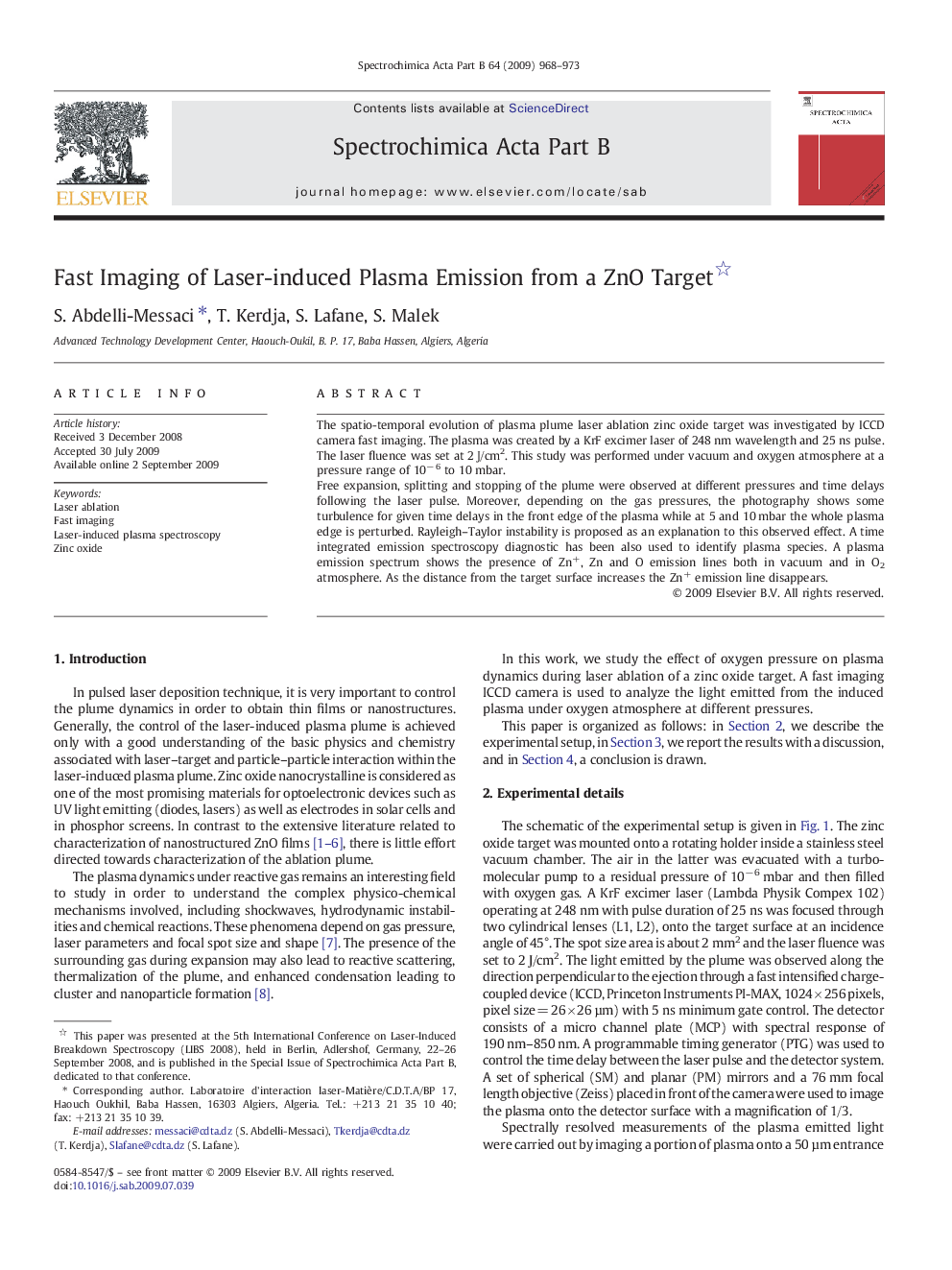| Article ID | Journal | Published Year | Pages | File Type |
|---|---|---|---|---|
| 1240790 | Spectrochimica Acta Part B: Atomic Spectroscopy | 2009 | 6 Pages |
The spatio-temporal evolution of plasma plume laser ablation zinc oxide target was investigated by ICCD camera fast imaging. The plasma was created by a KrF excimer laser of 248 nm wavelength and 25 ns pulse. The laser fluence was set at 2 J/cm2. This study was performed under vacuum and oxygen atmosphere at a pressure range of 10− 6 to 10 mbar.Free expansion, splitting and stopping of the plume were observed at different pressures and time delays following the laser pulse. Moreover, depending on the gas pressures, the photography shows some turbulence for given time delays in the front edge of the plasma while at 5 and 10 mbar the whole plasma edge is perturbed. Rayleigh–Taylor instability is proposed as an explanation to this observed effect. A time integrated emission spectroscopy diagnostic has been also used to identify plasma species. A plasma emission spectrum shows the presence of Zn+, Zn and O emission lines both in vacuum and in O2 atmosphere. As the distance from the target surface increases the Zn+ emission line disappears.
